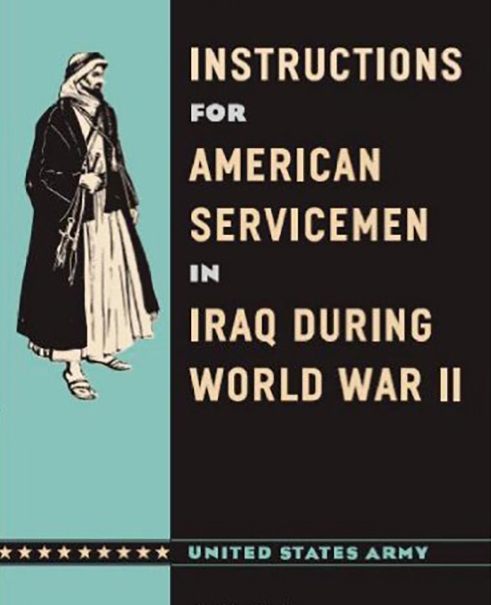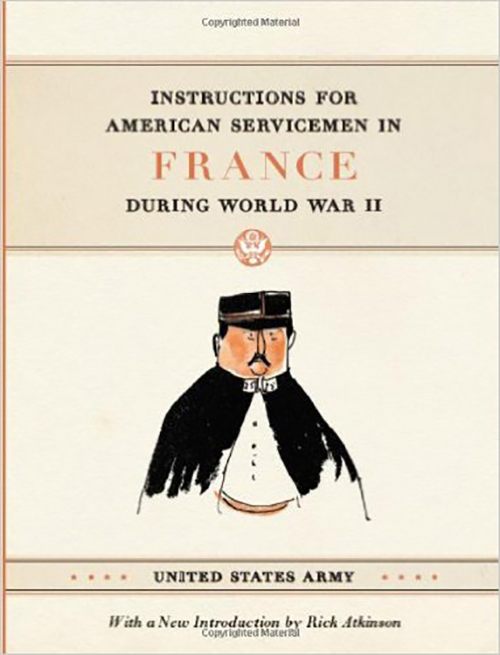How The Army Handled Cultural Sensitivity Training in WWII
 (Photo: US Army/Public Domain)
(Photo: US Army/Public Domain)
What does a travel guide look like when you’re part of an occupying army? Thanks to Oxford’s Bodleian Library, we can get an idea. In the early 2000s, the library began reissuing a series of pamphlets that had been given to Allied servicemen before their trips to foreign nations.
These guides can tell us a lot about cultural attitudes and a little about military strategy during World War II, but more than anything, they highlight shifting priorities in how troops interact with civilians.
According to correspondence between the War department and to the headquarters of General Eisenhower in London, the original pamphlet, “A Pocket Guide to France,” was “to give a general idea of the country concerned, to serve as a guide to behavior in relation to the civil population, and to contain a suitable, concise vocabulary.”
Each book has its own character, but all encourage the audience—Allied troops—to remember that their main duties were respect and empathy. The guides offered the background necessary for servicemen to respect local customs and empathize with civilians’ struggles.
 (Photo: The Bodleian Library)
(Photo: The Bodleian Library)
It’s not clear whether this was the first time the Department of Defense (then the War Department) created such informational pamphlets for their servicemen, but it is likely that it was the first time they created these many at this scale. The last international conflict the United States had been involved in, World War I, was also in Europe, but the Americans joined the fight three years into its inception.
The American guidebooks seek to engage service members by making other countries feel relevant—either to American history, or to contemporary popular culture. The French guide, for instance, alludes to the help of the Marquis de Lafayette during the American Revolution. Other pamphlets invoke ideas about foreign countries soldiers might picked up from movies, and strive to put those images into context. “Remember Lawrence of Arabia?” asks the one for Iraq. “Well, it was with men like these [Iraqis] that he wrote history in the First World War.”
The American guidebooks are somewhat light on the foreign relations, instead focusing more on history, cultural rules, the country’s political and emotional state of mind, basic descriptions of money and language, and do’s and don’ts for how American troops should interact with countrymen individually: “The French also shake hands on greeting each other and on saying goodbye. They are not back-slappers.”
 (Photo: US Army/Public Domain)
(Photo: US Army/Public Domain)
The pamphlets don’t just illuminate cultural attitudes and histories. Each country’s guide reveals a lot about its perceived strategic value. The War Department considered the French guide especially important because France was the location of Operation Overlord, the military operation that started with D-Day. If the Allied soldiers were going to drop on the French in droves, it was considered a good idea to make sure they knew something about where they ended up.
Considering the grand entrance Americans were to make so late in the war, the theme throughout all the Instructions for American Servicemen pamphlets is making sure the American soldiers know to treat their foreign hosts with respect. More than anything, though, the guidebooks desire to increase troops’ empathy with the civilians they encountered was emphasized as a way to counteract Hitler’s propaganda:
The Allied Invasion will bring up extra problems and lots of talk. Stay out of these local discussions, even if you have had French II in High School. In any French argument on internal French affairs, you will either be drowned out or find yourself involved in a first class French row. Quarrels between those who are fighting Hitler can still give him a big dangerous boost. He started this war on the principle of Divide and Conquer and his propaganda experts still believe they can make it work.”
 (Photo: The Bodleian Library)
(Photo: The Bodleian Library)
This wasn’t just true for France. Instructions for American Servicemen in Britain, 1942, also aimed to make soldiers sympathize with what the British had endured. And there were long-simmering resentments to address. The British guide instructs American servicemen with long memories to remember that Britain is first and foremost their allies:
“If you come from an Irish American family, you may think of the English as persecutors of the Irish, or you may think of them as enemy Redcoats who fought against us in the American revolution in the war of 1812,” it notes. “But there is no time today to fight all the wars over again or bring up old grievances.”
The advice to treat civilians with understanding and compassion is good military strategy. In his Foreign Policy article in 2009, “Why They Hate Us (I): On Military Occupation,” Harvard international relations professor Stephen M. Walt points out that citizens in occupied countries may harbor resentments if soldiers don’t treat them well. “Military occupation generates resistance because it is humiliating, disruptive, arbitrary and sometimes terrifying to its objects,” he writes, “even when the occupying power is acting from more-or-less benevolent motives. If you’ve ever been caught in a speed trap by a rude or abusive policeman (I have), or selected out for special attention crossing a border (ditto), you have a mild sense of what this is like. You are at the mercy of the person in charge, who is inevitably well-armed and can do pretty much whatever he (or she) wants.”

(Photo: The Bodleian Library)
Giving soldiers a basic grounding in the countries they visit—and specifically in the potential trials and traumas of the civilians—helps keep them from abusing this power. It’s a move of compassion, one that works to avoid these kind of long-term prejudices.
In an interview on NPR’s “All Things Considered,” Lt. Col. John Nagl, an Iraq war veteran who wrote the introduction to the republished text, says ruefully, “Gosh, I wish I’d had it when I deployed to Iraq in September 2003.” In his introduction, he notes, “History doesn’t repeat itself, but it often rhymes.”
What they did have was the Counterinsurgency Field Manual, which the Army and Marine Corps unveiled in 2006, after realizing counterinsurgency tactics from their previous research for El Salvador in the 1980s needed updating. The new manual, like the World War II pamphlets, emphasized empathy and respect to civilians. Violence in Iraq decreased dramatically after it was issued, and many believe the reduction was due to this more compassionate approach.
Nagl wrote the forward to the field manual when it was released to the general public in 2007, pointing out how absurd it was that the army didn’t have such a thing in 2003 at the start of the Iraq War. The inscription inside of a reporter’s used copy of Instructions for American Servicemen in Iraq During WWII agrees. It’s addressed to a soldier going to Iraq in October 2007, and reads: “This is a very interesting book with good advice that is applicable some sixty-four years after it was originally published.”
Compassionate behavior, it seems, never goes out of style.












Follow us on Twitter to get the latest on the world's hidden wonders.
Like us on Facebook to get the latest on the world's hidden wonders.
Follow us on Twitter Like us on Facebook